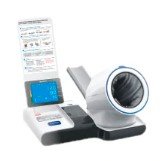Telemedicine Adoption Impact on Phlebotomy Practices in the United States
Summary
- Telemedicine adoption is changing the landscape of phlebotomy practices in the United States.
- Remote patient monitoring and virtual consultations are becoming more common in healthcare, affecting how phlebotomists collect and handle samples.
- New technologies are being integrated into phlebotomy processes to optimize efficiency and patient outcomes.
Introduction
The field of healthcare is rapidly evolving, and technology is playing a significant role in shaping the way medical services are delivered. Telemedicine, in particular, is gaining traction in the United States as a way to improve access to care, increase efficiency, and reduce costs. As telemedicine adoption continues to grow, its impact on various healthcare practices, including phlebotomy, is becoming more evident. In this article, we will explore how telemedicine adoption is influencing phlebotomy practices in the United States.
Telemedicine and Phlebotomy
Telemedicine involves the use of technology to provide healthcare services remotely. This can include video consultations, remote patient monitoring, and digital communication between Healthcare Providers and patients. As telemedicine becomes more widely accepted, its influence on phlebotomy practices is becoming increasingly pronounced.
Remote Patient Monitoring
One of the ways telemedicine is impacting phlebotomy practices is through remote patient monitoring. With the use of wearable devices and other technology, Healthcare Providers can now track patients' vital signs and health parameters from a distance. This means that patients may not need to visit a medical facility for routine check-ups, reducing the need for traditional phlebotomy services. However, when blood work is required, patients can visit a local lab for sample collection, which is then sent to a central lab for testing.
Virtual Consultations
Another way telemedicine is changing phlebotomy practices is through virtual consultations. Patients can now connect with Healthcare Providers online for initial assessments and follow-up appointments. While virtual consultations can provide convenience and flexibility for patients, they also pose challenges for phlebotomists who may need to adapt their practices to accommodate remote blood sample collection. This can involve providing patients with instructions for self-collection or coordinating with local labs for sample collection and transportation.
Integration of New Technologies
To meet the demands of telemedicine and optimize phlebotomy practices, new technologies are being integrated into the field. For example, some labs are adopting automated blood collection devices that can be operated remotely. These devices can be controlled by phlebotomists from a central location, allowing for efficient and precise sample collection. Additionally, technologies such as RFID tracking and Electronic Health Records are being utilized to streamline the process of sample identification, handling, and reporting.
Mobile Phlebotomy Services
As telemedicine continues to reshape healthcare delivery, Mobile Phlebotomy services are emerging as a convenient solution for patients who require blood work but are unable to visit a traditional lab. Mobile phlebotomists can visit patients at their homes or workplaces to collect blood samples, which are then processed at a central lab. This service not only benefits patients by providing them with access to essential healthcare services but also supports telemedicine initiatives by enabling remote sample collection.
Training and Education
With the increasing integration of technology into phlebotomy practices, phlebotomists need to stay current with new tools and techniques. Training programs and Continuing Education opportunities are essential for phlebotomists to learn how to effectively use new technologies, adhere to telemedicine guidelines, and provide high-quality care to patients. By investing in training and education, healthcare facilities can ensure that their phlebotomists are equipped to meet the demands of telemedicine adoption.
Conclusion
Telemedicine adoption is having a significant impact on phlebotomy practices in the United States. From remote patient monitoring to virtual consultations, new technologies and approaches are reshaping how blood samples are collected, handled, and processed. As telemedicine continues to evolve, phlebotomists must adapt to meet the changing needs of healthcare delivery. By integrating new technologies, implementing Mobile Phlebotomy services, and investing in training and education, phlebotomists can play a vital role in supporting telemedicine initiatives and improving patient outcomes.

Disclaimer: The content provided on this blog is for informational purposes only, reflecting the personal opinions and insights of the author(s) on the topics. The information provided should not be used for diagnosing or treating a health problem or disease, and those seeking personal medical advice should consult with a licensed physician. Always seek the advice of your doctor or other qualified health provider regarding a medical condition. Never disregard professional medical advice or delay in seeking it because of something you have read on this website. If you think you may have a medical emergency, call 911 or go to the nearest emergency room immediately. No physician-patient relationship is created by this web site or its use. No contributors to this web site make any representations, express or implied, with respect to the information provided herein or to its use. While we strive to share accurate and up-to-date information, we cannot guarantee the completeness, reliability, or accuracy of the content. The blog may also include links to external websites and resources for the convenience of our readers. Please note that linking to other sites does not imply endorsement of their content, practices, or services by us. Readers should use their discretion and judgment while exploring any external links and resources mentioned on this blog.
